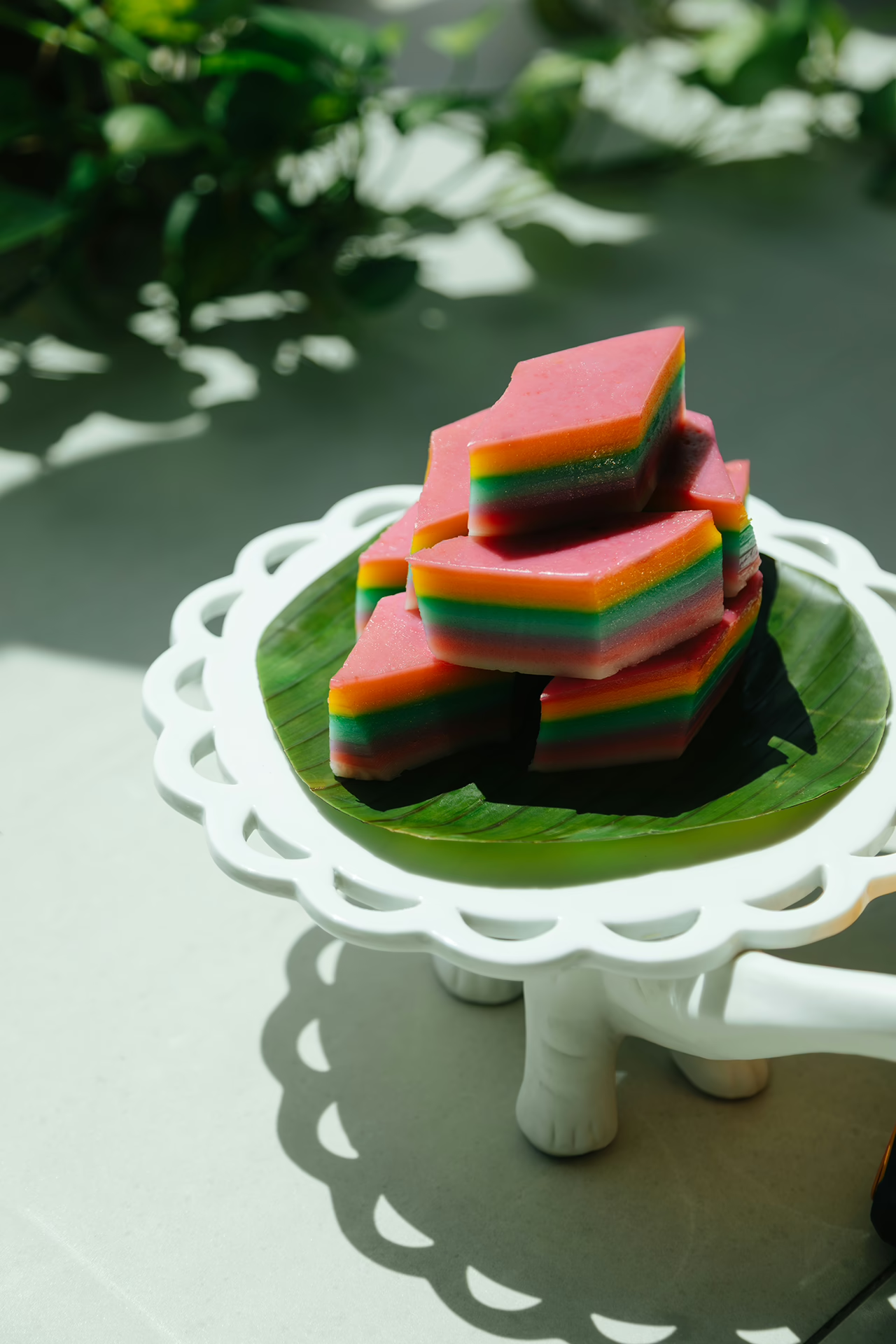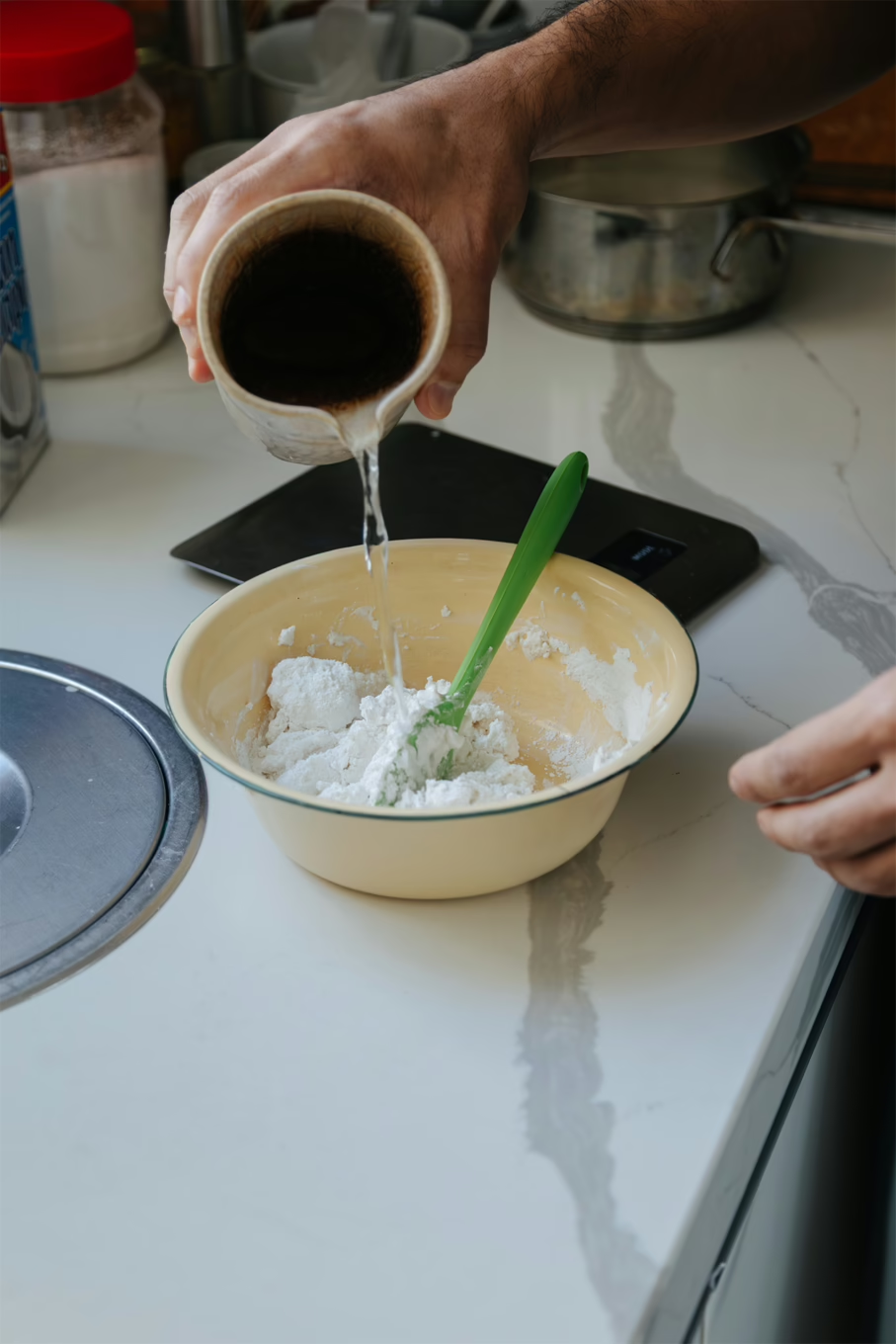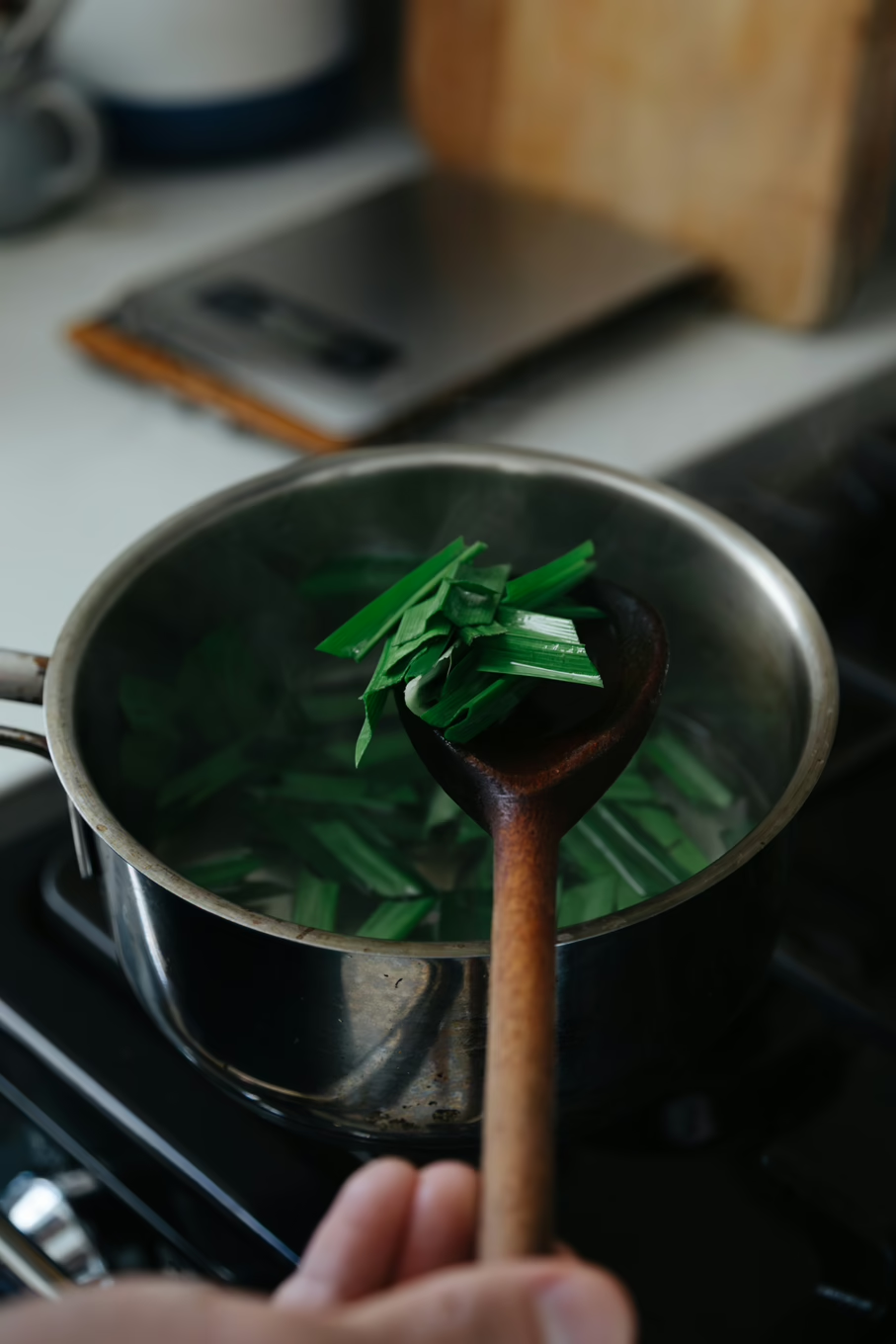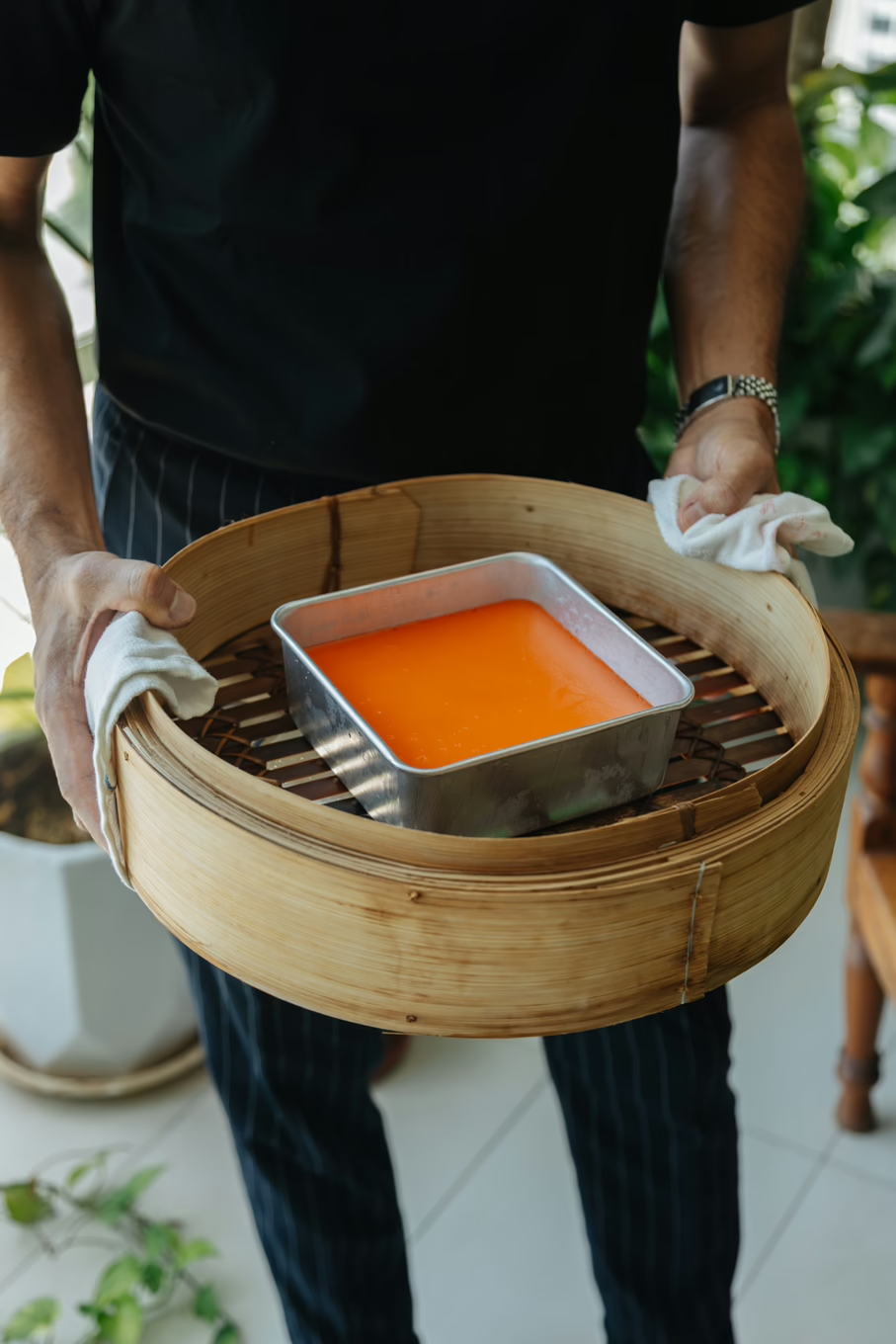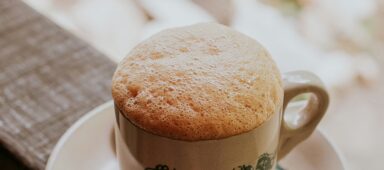Unwrap the story behind kuih lapis, a festive and time-honoured treat with a legacy shaped by Malay and Peranakan hands
“Kuih is a test of your patience,” says Dinesh Rao, a professional cake and kuih maker whose trays of traditional treats regularly sell out within hours on Instagram. “Kuih lapis (layered cake) takes two hours to prepare and steam. It needs to rest at room temperature – no fridge, no fan, definitely no freezer. I wasn’t very good at being patient in the beginning,” he laughs.
There’s a reason this beloved bite-sized dessert demands such precision and time. Made from rice flour, coconut milk, pandan water and sugar, kuih lapis typically features eight to nine layers, each one steamed on top of the last in the same tray. Every portion of batter is weighed to ensure consistency – a slight misstep and the whole cake loses its delicate uniformity.
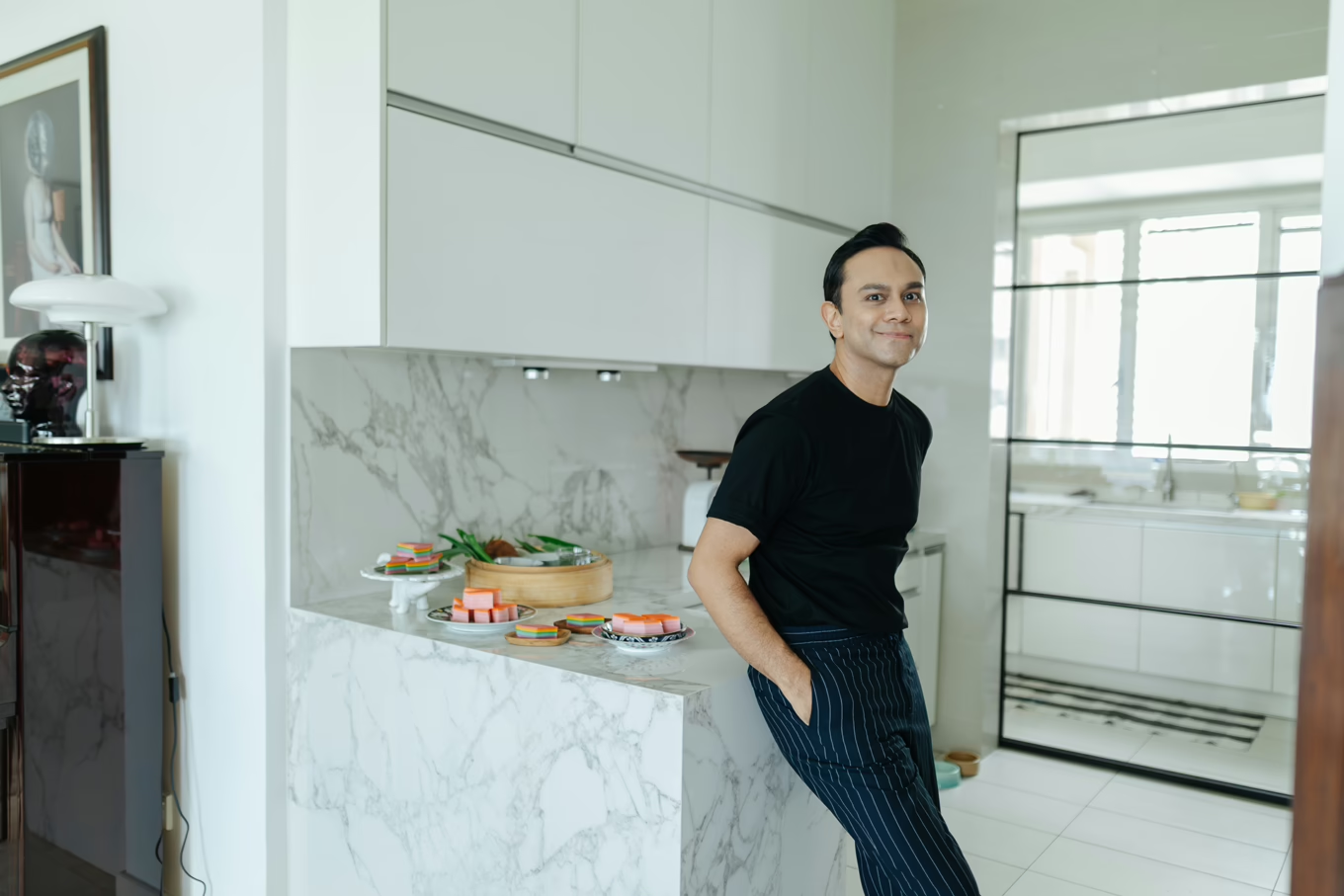
Over generations, the recipe was adapted by various communities, including the Malays and Peranakans, resulting in different techniques and colour palettes – but always with a shared emphasis on texture, patience and presentation. Today, kuih lapis is seen as both a festive treat and a nostalgic comfort food, often found at markets, celebrations and family gatherings.
Rao took up kuih-making during the Covid-19 lockdown and quickly found his rhythm. His creations – painstakingly layered and visually striking – drew attention online. While the classic Peranakan-style version features bands of pink and white, topped with a red or orange cap, Rao began experimenting with colour.
“I didn’t want to change the flavour or texture,” he explains. “But I knew if it looked pretty, people would be curious.” His first variation was a subtle ombré, followed by a whimsical pastel-hued “unicorn” kuih and eventually a bold rainbow version – each one a nod to his modern take on a traditional form.
Despite his visual reinvention, Rao stays faithful to traditional ways of eating kuih lapis. “Some people use a fork,” he says, “but I still prefer peeling it layer by layer with my fingers. That’s how I learned as a kid. That’s still the fun part.” @myasiankitchen
“The most challenging parts are the temperature and the timing,” Rao says. “Over-steam it and the texture changes. Under-steam it and the layers won’t peel cleanly.” He recalls tossing out entire trays when batches were underdone by 30 seconds – something you only discover after cutting.
Here, Rao shares with us his step-by-step process for making kuih.
